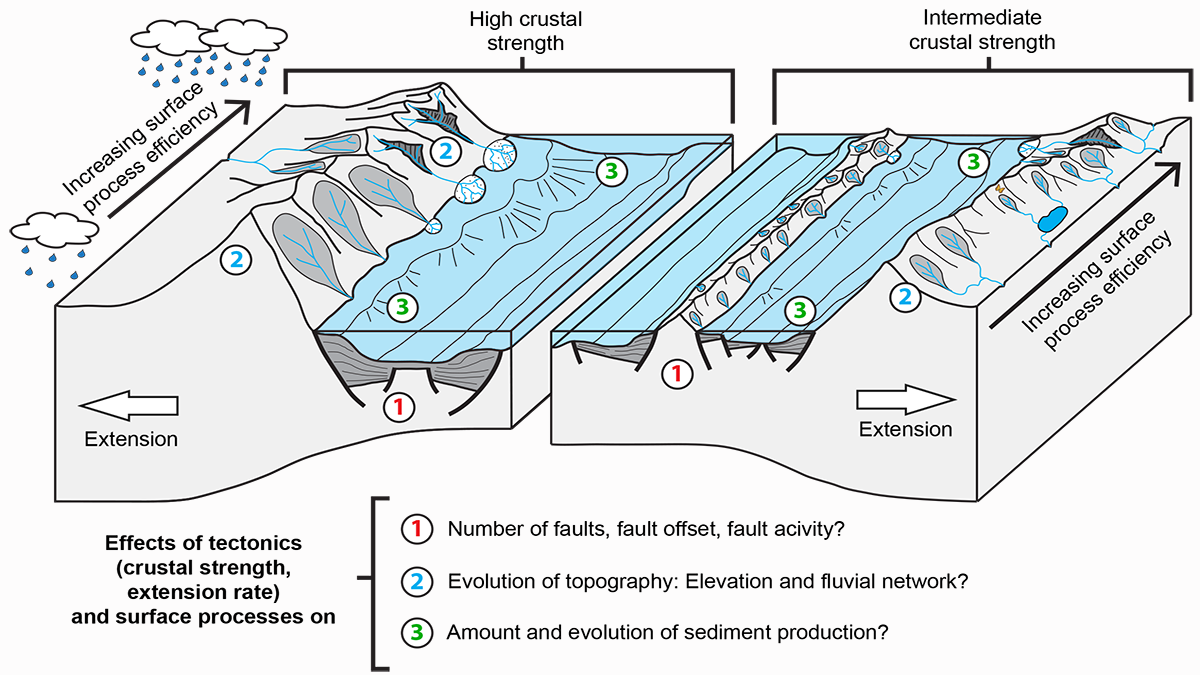Editors’ Highlights are summaries of recent papers by AGU’s journal editors.
Source: Journal of Geophysical Research: Solid Earth
Inferring the topographic evolution around sedimentary basins has remained problematic as the feedback between uplift and erosion cannot be easily constrained. Wolf et al. [2022] use numerical models of rifting, shoulder uplift, and weathering to illustrate how the tectonics driving the formation of basins is intimately linked to the uplift of the neighboring land.
The models show that the removal of topography by erosion further enhances uplift, thereby increasing weathering, and the sediment influx into the depressed basins with it. These simulations provide quantitative tools to correctly invert the basins’ sediments, the only record of the topography lost to erosion, for the evolution of the elevated areas in continental rifts.
The authors show that the narrow basins form the highest shoulders therefore maximize the sediment influx, as opposed to wide rifts, where topography surrounding basins remains mild and sediment influx wanes. Furthermore, they estimate a lagging time before the sediment influx increases, which is up to 5 million years after the elevated topography has been established.
Future studies could address how this feedback works in three dimensions, where uplift can be further emphasized by the lateral loading of the crust, along the basin’s axis direction.
Citation: Wolf, L., Huismans, R. S., Rouby, D., Gawthorpe, R. L., & Wolf, S. G. (2022). Links between faulting, topography, and sediment production during continental rifting: Insights from coupled surface process, thermomechanical modeling. Journal of Geophysical Research: Solid Earth, 127, e2021JB023490. https://doi.org/10.1029/2021JB023490
—Fabio A. Capitanio, Associate Editor, Journal of Geophysical Research: Solid Earth

